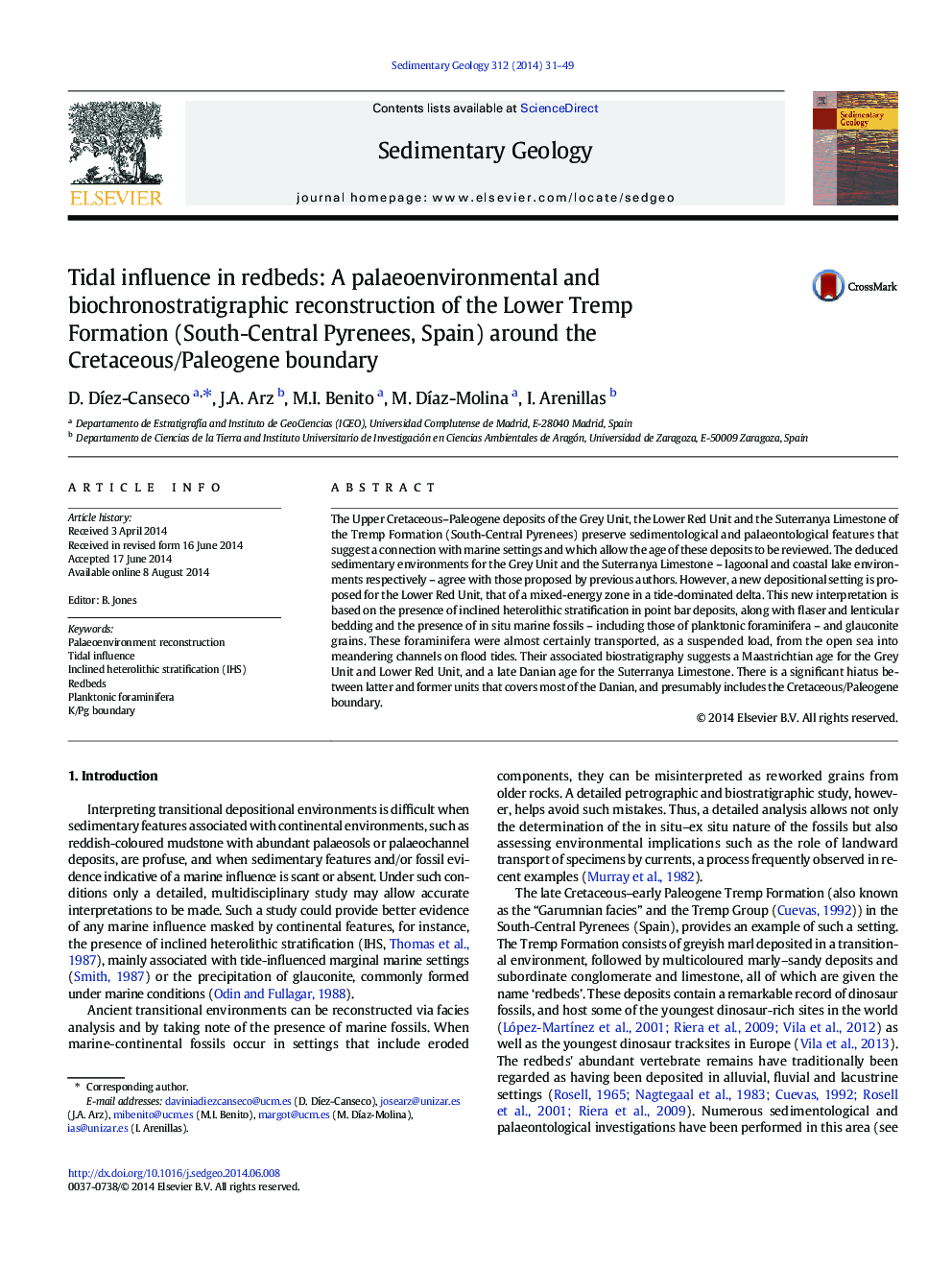| Article ID | Journal | Published Year | Pages | File Type |
|---|---|---|---|---|
| 4689365 | Sedimentary Geology | 2014 | 19 Pages |
•A multidisciplinary approach was key in detecting marine influence.•IHS, glauconite and in situ marine microfossils in redbeds suggest a tidal influence.•Planktonic foraminifera were transported as a suspension load in meandering channels.•The evidence suggests the presence of in and ex situ microfossils.•The ages for the lower Tremp Formation and K/Pg boundary location are established.
The Upper Cretaceous–Paleogene deposits of the Grey Unit, the Lower Red Unit and the Suterranya Limestone of the Tremp Formation (South-Central Pyrenees) preserve sedimentological and palaeontological features that suggest a connection with marine settings and which allow the age of these deposits to be reviewed. The deduced sedimentary environments for the Grey Unit and the Suterranya Limestone – lagoonal and coastal lake environments respectively – agree with those proposed by previous authors. However, a new depositional setting is proposed for the Lower Red Unit, that of a mixed-energy zone in a tide-dominated delta. This new interpretation is based on the presence of inclined heterolithic stratification in point bar deposits, along with flaser and lenticular bedding and the presence of in situ marine fossils – including those of planktonic foraminifera – and glauconite grains. These foraminifera were almost certainly transported, as a suspended load, from the open sea into meandering channels on flood tides. Their associated biostratigraphy suggests a Maastrichtian age for the Grey Unit and Lower Red Unit, and a late Danian age for the Suterranya Limestone. There is a significant hiatus between latter and former units that covers most of the Danian, and presumably includes the Cretaceous/Paleogene boundary.
